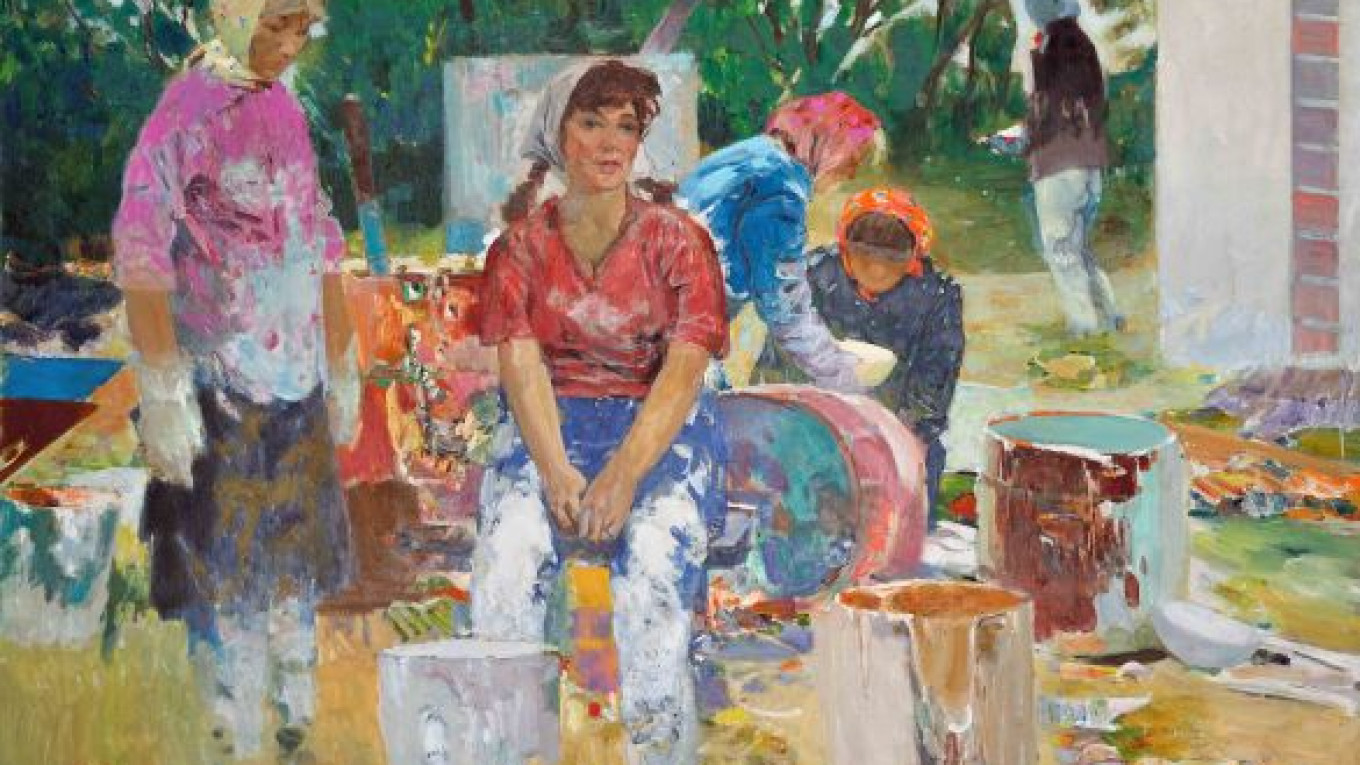Some may associate Soviet art with tractors and jovial collective farm workers. But Soviet art was more than just a pictorial method of advertising socialist values. A new survey at NB Gallery — from the impressionistic brushwork of Erik Rebane to psychological Rembrandt-like portraits by Boris Kharchenko — disproves claims that Soviet artistic life was suppressed by ideology.
The exhibition is devoted to artists of the Leningrad school of art, with paintings and graphics from the 1950s to '70s. It presents a generation of creators who drew influence from their Academy of Art heritage, as well as the avant-garde and formalist styles, which paradoxically found revival in a time when they were considered bourgeois and decadent.
"This is art forgetting that it was 'Soviet' art," said Anna Eramzhyan, a curator at the gallery.
Many of the artists on show have been exhibited before, but this is the first attempt to group them in this context and show the interrelation between the different movements they represent, Eramzhyan said. "We aim to reveal the depth and variety of methods used in painting socialist realism," she added.
At first glance, the works deal with conventional proletarian subject matter: scenes of everyday life and people. However, every artist tackles his theme in a very distinct manner.
One canvas depicts lumber mill laborers with a hue and contours that are reminiscent of the primitivism of the Russian avant-garde painter Natalya Goncharova.
Another evokes the abstract peasant motifs of Kazimir Malevich by obliterating the faces of its subjects.
Sometimes, several artists can be seen approaching a similar theme differently. Severe industrial scenes, milkmaids and village landscapes are made emotional and poetic through individual styles of art expression.
"You can tell an artist what to paint, but you cannot tell him how to paint it," Eramzhyan said. "The language used in these works is a long way from typical realism."
Their radicalism lies in their eagerness to appropriate and learn from the past, as well as to reject conventional realist techniques.
In the first half of the 20th century, art that was not entirely representative of reality was seen as counter-revolutionary in the Soviet Union and was subjected to numerous purge campaigns. After Stalin's death in 1953, the rules were relaxed and gave way to experiment. Artists could then take a step away from depictions of reality and move on to expressive paintings and graphics.
According to Eramzhyan, the exhibition compels its audience to see that "art is more complicated than the idea it represents," and that artists cannot be reduced to a doctrine.
One work that sums up the idea is Sergei Pankratov's "View at St. Isaac's
Cathedral." The canvas is split into two parts, one showing a rural Leningrad with trees, marshes and people, and the other the golden domes and neoclassical outlines of the cathedral that is more evocative of a pre-revolutionary St. Petersburg than a new socialist world.
The exhibition shows that all the major schools that preceded socialist realism — classical painting, impressionism, expressionism, cubism — still influenced their successor.
"Leningrad Legacy: Avant-garde, Formalism or Realism?" is on display through March 9 at NB Gallery, 6/2 Sivtsev Vrazhek, Suite 2. Door Code 002. Metro Kropotkinskaya, Arbatskaya. Tel. 697-4006, 737-5298, www.nbgallery.com.
A Message from The Moscow Times:
Dear readers,
We are facing unprecedented challenges. Russia's Prosecutor General's Office has designated The Moscow Times as an "undesirable" organization, criminalizing our work and putting our staff at risk of prosecution. This follows our earlier unjust labeling as a "foreign agent."
These actions are direct attempts to silence independent journalism in Russia. The authorities claim our work "discredits the decisions of the Russian leadership." We see things differently: we strive to provide accurate, unbiased reporting on Russia.
We, the journalists of The Moscow Times, refuse to be silenced. But to continue our work, we need your help.
Your support, no matter how small, makes a world of difference. If you can, please support us monthly starting from just $2. It's quick to set up, and every contribution makes a significant impact.
By supporting The Moscow Times, you're defending open, independent journalism in the face of repression. Thank you for standing with us.
Remind me later.






